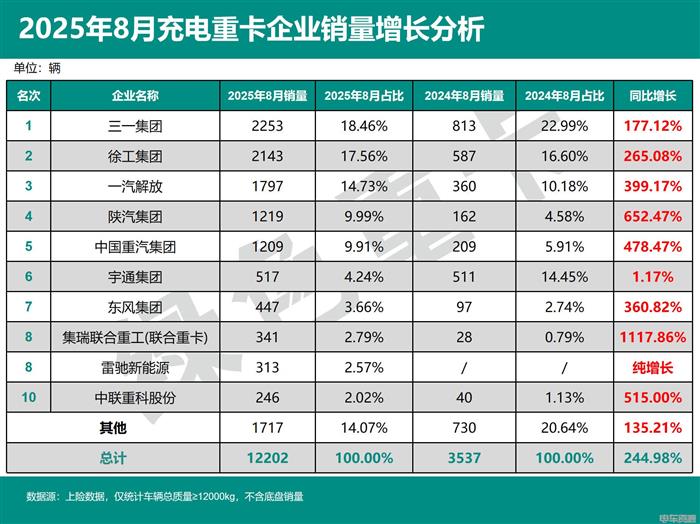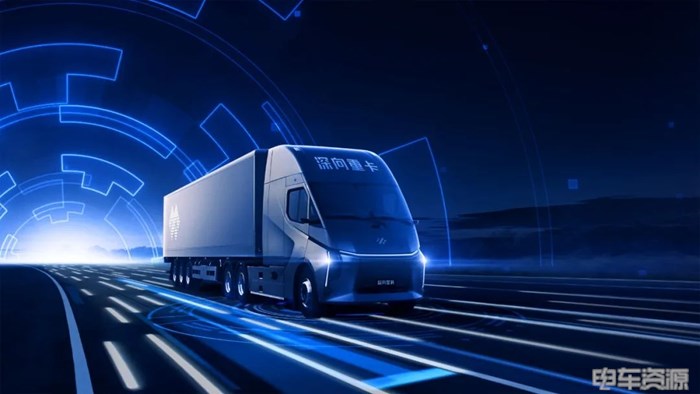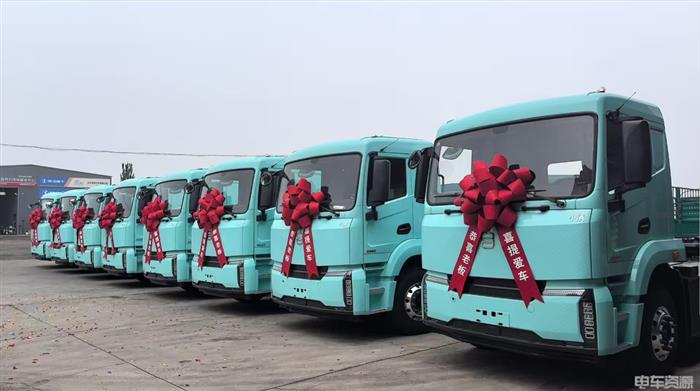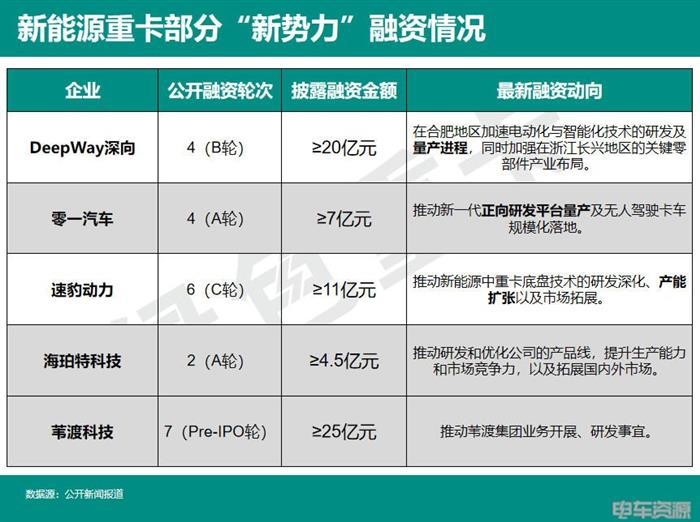Sales: The new heavy-duty truck forces have yet to break through the "niche circle"
In 2025, the new energy heavy-duty truck market is undergoing a deep transformation from being policy-driven to market-driven.
With the comprehensive withdrawal of subsidies for new energy, the Ministry of Ecology and Environment's strategy of "retreating from the fourth stage, managing the fifth, regulating the sixth, and promoting new energy" has been implemented. The accelerated elimination of national fourth stage and below trucks, along with the substitution by new energy, forms a closed-loop policy. Coupled with the scheduling of the national seventh stage standards, the survival space for traditional fuel heavy-duty trucks continues to be compressed.
In this context, the new energy heavy-duty truck sector is showing significant differentiation: leading companies are capturing the market through technological deployment and ecosystem collaboration, while small and medium players are struggling due to financial constraints and insufficient scenario adaptation. The industry's "elimination race" is about to begin.
I. Sales: The new heavy-duty truck forces have yet to break through the "niche circle"
The new energy heavy truck market is experiencing explosive growth, with national sales reaching 114,353 units from January to August 2025, a year-on-year increase of 178.84%. This growth is attributed to the expansion of the "old-for-new" policy to include National IV and below trucks, which has driven renewal demand, as well as the significant operational cost advantages of new energy heavy trucks—electric heavy trucks demonstrate clear cost benefits over fuel vehicles in medium and short-distance scenarios, and preferential road access policies further enhance their market appeal. However, behind the overall high growth, the sales differentiation among new players is very pronounced.
Leading newcomers in the industry have achieved sales breakthroughs through precise scenario positioning, such as DeepWay and Zero One Auto. Their products continue to focus deeply on short-distance scenarios like ports and mines, while also expanding into open scenarios such as urban logistics and long-haul transportation. According to Green Electric Truck data analysis, in the sales ranking of electric heavy-duty truck companies in August 2025,DeepWay (contract manufactured by Leichi New Energy) has entered the top ten of the list.。

In stark contrast, the vast majority of new heavy truck players are unable to compete with leading traditional players in terms of sales. Due to inadequate product compatibility and weak service networks, most small and medium-sized new players have monthly sales of less than a hundred units.
This differentiation is essentially a gap in scenario adaptation capability—now that transportation companies are increasingly focused on TCO costs, enterprises that only have product performance advantages but lack the ability to implement in real scenarios have found it difficult to establish a foothold in the market.
2. Product and Technology Layout: In-house Development as the Key to Breakthrough
The product layout of the new heavy truck forces shows a distinct characteristic of "high concentration and local breakthroughs," with a focus on categories and differentiated choices in technology routes, which together constitute the fundamental landscape of current market competition.
In terms of category coverage, the vast majority of new power companies focus their resources on the single category of tractors: for instance, DeepWay, Zero One Auto, and Subao Power are all dedicated to the electric tractor sector; Hypertruck and Weidu have ventured into the hydrogen-powered tractor niche; while Zaihe Auto has developed a full-category layout of tractors, dump trucks, and cargo trucks, becoming one of the few companies among the new forces to break through the limitations of a single category.

This layout difference is essentially a divergence in strategic choices—most new forces choose to start with tractors, aiming for a breakthrough in high-frequency short-distance scenarios such as medium and short-haul transportation, mining, and ports, while Liyang attempts to seize market share across multiple scenarios through comprehensive category coverage.
Beyond the category, the path to acquiring core technologies has become a key variable in the differentiation of new forces. DeepWay, Zero One Auto, and Supao Power all have self-developed electric drive bridges as core technological support. This difference directly points to a critical issue in the next stage of competition in the new energy heavy truck industry.Mastering core component technologies such as electric drive axles has become a key entry ticket for new forces to survive and advance to the next round of competition, as the knockout window is about to open and the market is gradually shifting to a technology-driven landscape.

In contrast, the "assembled car" model, which relies on external suppliers, can reduce initial development costs and accelerate product launch speed, but it has inherent limitations in terms of technical compatibility, cost control, and iterative response.
It can be seen thatThe product technology competition among new heavy-duty truck forces is far more intense than that of traditional brands.Whether the ability to build barriers through self-developed core technology can directly determine if a company can break through its growth bottleneck. Against the backdrop of subsidy reductions and the market's transition to technology-driven models, companies with self-developed core components will take the initiative in energy consumption control, cost optimization, and technological iteration. In contrast, companies lacking a technological foundation may achieve short-term category expansion, but will find it difficult to stand firm in long-term competition.
3. Financing Capability: Capital Focuses on Technological Barriers, Intensifying the Trend of Head Concentration
The characteristic of the new energy heavy-duty truck industry being "high R&D investment and long return cycle" makes financing capability the key to the survival of new forces. The investment logic of capital has gradually shifted from "policy adaptability" to "technical barriers and commercialization capability," with a focus on the competitiveness of enterprises in self-research of core components, efficiency of scenario implementation, and ecological integration capability.
From the perspective of financing landscape, the industry shows a significant characteristic of head concentration: companies that have completed Series B and above financing have generally raised more than 1 billion yuan, with funds mainly directed towards...Mass production and delivery of vehicles, expansion of core component production capacity, and R&D development. Form a "technology-product-service" financial loop.

Since 2025, many companies have been forced to downsize their R&D teams and halt product iterations due to obstacles in financing. The cautious attitude of capital has further accelerated industry reshuffling. Leading companies that can prove the commercial viability of their technology are expanding their production capacity and channel advantages through financing advantages, while small and medium players with broken capital chains are gradually exiting the market, with market share concentrating towards a few leading companies.
Summary: The reshuffling of new heavy truck forces is entering the countdown.
The current new energy heavy truck industry is at a critical transition period from being "policy-driven" to being driven by both "market and technology." In this reshuffling, the new players that can survive must possess three core capabilities: first, precise scene adaptation capability, which requires customizing products based on the specific needs of different scenarios such as heavy loads and mountainous areas to achieve optimal TCO costs; second, continuous technological breakthrough capability, which involves making advancements in key areas such as battery energy density, fast charging efficiency, and intelligence; third, ecological synergy capability, which entails building a network for energy replenishment and services by collaborating with upstream and downstream partners in the industry chain to address the core pain points of users.
For emerging forces, the final window of opportunity is gradually narrowing. With the advancement of the formulation of the China National VI emissions standards and the accelerated transition of traditional enterprises to new energy, industry competition will further intensify. In the next 1-2 years, companies that fail to complete the "technology-product-ecosystem" loop may completely lose their market opportunities. Meanwhile, leading players that accurately position themselves in niche tracks and build core competitiveness are expected to grow from market "breakers" to rule "makers" amidst the wave of rapidly increasing penetration rates.
【Copyright and Disclaimer】The above information is collected and organized by PlastMatch. The copyright belongs to the original author. This article is reprinted for the purpose of providing more information, and it does not imply that PlastMatch endorses the views expressed in the article or guarantees its accuracy. If there are any errors in the source attribution or if your legitimate rights have been infringed, please contact us, and we will promptly correct or remove the content. If other media, websites, or individuals use the aforementioned content, they must clearly indicate the original source and origin of the work and assume legal responsibility on their own.
Most Popular
-

Zf asia-pacific innovation day: Multiple Cutting-Edge Technologies Launch, Leading Intelligent Electric Mobility
-

Mexico officially imposes tariffs on 1,400 chinese products, with rates up to 50%
-

Fire at Sinopec Quanzhou Petrochemical Company: 7 Injured
-

List Released! Mexico Announces 50% Tariff On 1,371 China Product Categories
-

Argentina Terminates Anti-Dumping Duties on Chinese PVC Profiles! Kingfa Technology & Siemens Sign Digital and Low-Carbon Cooperation Agreement






